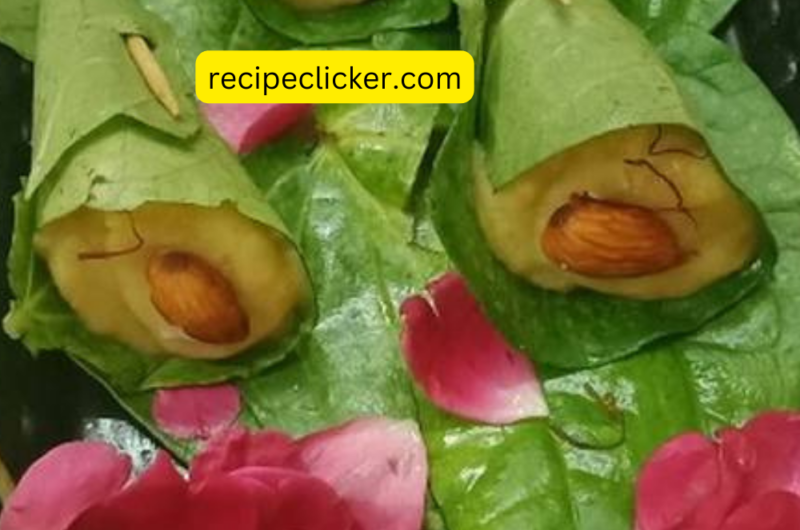How to Make -Singodi Recipe: A Taste of Uttarakhand ? Indulging in the culinary wonders of Uttarakhand unveils a treasure trove of delightful flavors, and at the heart of this gastronomic adventure lies Singodi. This traditional sweet encapsulates the essence of Uttarakhandi cuisine, offering a tantalizing blend of grated coconut, khoya (reduced solidified milk), and jaggery. Wrapped in banana leaves for a unique infusion of flavors, Singodi represents more than just a dessert; it’s a cultural emblem.

Hailing from the picturesque landscapes of Uttarakhand, Singodi embodies simplicity intertwined with rich flavors. Its preparation involves a careful orchestration of ingredients and techniques passed down through generations. The grated coconut, toasted to a golden hue, pairs harmoniously with khoya, creating a creamy texture that melts in the mouth. Jaggery, with its earthy sweetness, binds these elements together, infusing each bite with a delectable sweetness.
What elevates Singodi to an unparalleled culinary delight is its method of preparation. The mixture of coconut, khoya, and jaggery is meticulously wrapped in banana leaves, adding a subtle yet distinctive aroma and taste that sets it apart. This process not only imparts a unique flavor but also reflects the region’s resourcefulness, using local leaves to enhance the dish’s essence.
The charm of Singodi extends beyond its taste. It mirrors the spirit of Uttarakhand, encapsulating warmth, tradition, and a sense of community. Every step in crafting Singodi embodies a cultural heritage deeply rooted in the region’s ethos.
Served during festivals, celebrations, or as a sweet indulgence on ordinary days, Singodi isn’t just a dessert; it’s a flavorful tribute to Uttarakhand’s culinary heritage. Its preparation is an art, each parcel carefully wrapped, steamed, and savored to relish the symphony of flavors.
Whether you’re exploring Uttarakhand’s local cuisine or seeking a taste of authenticity, Singodi stands as an epitome of tradition, encapsulating the essence of a region rich in culture and culinary finesse. It’s a sweet delight that not only satiates the palate but also narrates a story of tradition, unity, and the vibrant flavors of Uttarakhand.
How To Make -Singodi Recipe: A Taste of Uttarakhand
Course: DessertCuisine: Indian10
servings20
minutes30
minutes200
kcalIngredients
2 cups grated coconut
1 cup khoya (reduced solidified milk)
1 cup jaggery, grated or powdered
Banana leaves or parchment paper for wrapping
Directions
- Prepare the Coconut Mixture:
Roast grated coconut in a non-stick pan on medium heat until golden brown and aromatic (8-10 minutes). Set aside to cool.
In the same pan, sauté khoya until it softens and blends well with the coconut. Remove from heat and let it cool. - Prepare the Jaggery Syrup:
In a separate pan, heat jaggery with a tablespoon of water over low-medium flame until it melts and forms a syrup (5-7 minutes). Set aside. - Combine and Shape:
Mix the roasted coconut-khoya mixture with the jaggery syrup in a bowl until well blended
Notes
- Ensure the jaggery syrup reaches a slightly sticky consistency for proper binding of the Singodi mixture.
If using banana leaves for wrapping, soften them over a flame briefly before wrapping the Singodi.
Steaming time may vary based on the size of Singodi; ensure they’re heated through but not overcooked to maintain texture.
Experiment with flavors by adding a pinch of cardamom or nutmeg for an aromatic twist to the Singodi.
Store Singodi in an airtight container once cooled. They can be refrigerated for a day or two, allowing the flavors to meld together beautifully.


